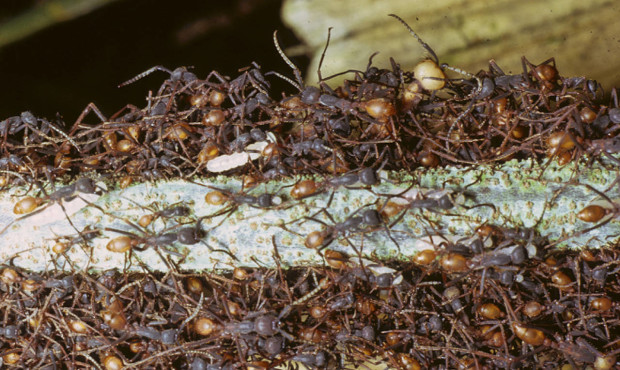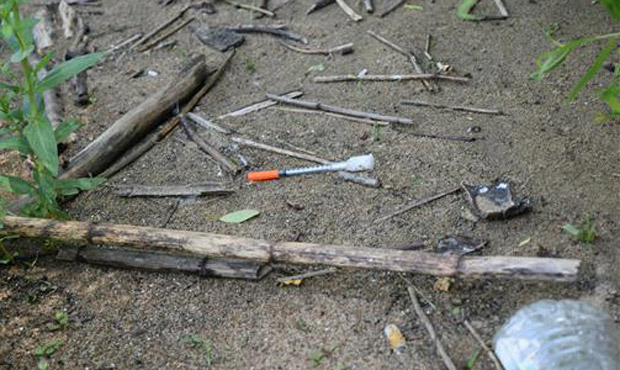AP
UConn to display work of biologist who collected 2M insects

In this 1975 photo released by the University of Connecticut, army ants gather in a colony in Ecuador. In summer 2016, UConn will begin digitally cataloguing a collection of about 2 million preserved army ants and create an exhibit after receiving a $500,000 grant from the National Science Foundation. To celebrate, the school plans to install 4-foot replica ants on the side of the bioscience building on it's campus in Storrs, Conn. (Carl Rettenmeyer/University of Connecticut via AP)
STORRS, Conn. (AP) — The University of Connecticut will use a $500,000 grant to give the public access to decades of work by a former biologist and his wife, who collected more than 2 million army ants, mites and other critters during more than 20 expeditions to the jungles of Central and South America.
The university’s Department of Ecology & Evolutionary Biology will use the grant from the National Science Foundation to begin digitally cataloging the collection of dead insects this summer, creating an electronic database that will be available online. Carl Rettenmeyer and his wife, Marian, collected the bugs between 1971 and 1996 when he worked for the department.
“We have bulk samples of many colonies, thousands of vials with preserved things in them, and quite a few cabinets with pinned insects in them as well,” Jane O’Donnell, the biologist who is managing the collection, said Wednesday.
The ant colonies also are documented in 5,000 Kodachrome slides and about 30 hours of digital videotape.
O’Donnell said the idea is to make the work accessible to everyone from elementary school students to the world’s top ant researchers.
The school is planning two exhibits, one about the ants and another about the Rettenmeyers. Carl, who died in 2009, also founded the Connecticut State Museum of Natural History at UConn.
The school plans to build a large-scale model of an army ant that will welcome visitors to school’s biology and physics building. There also will be 4-foot-long model ants placed on the side of the building to publicize the collection.
The Rettenmeyers painstakingly documented the complex life of foraging army ant colonies. They became the first to discover many of the other organisms that live there, such as a special mite that attaches to the end of an ant’s leg and serves as a sort of hiking boot for the insect, O’Donnell said.
The school expects the additional research on the ants will uncover new details about colony life. The collection, O’Donnell said, also will be a valuable source of DNA for those studying the history of ants and their symbiotic systems.
“We don’t even know what some of the relationships with some of these other organisms are,” she said. “We’re hoping that by putting all of these details together and making it easier to study, some patterns will emerge.”
The school hopes to have the initial exhibition ready by early 2017.
“We share billions of years of evolutionary history with these organisms, and we don’t even really have an accounting of what’s on the planet with us yet,” O’Donnell said. “That’s part of this.”
Copyright © The Associated Press. All rights reserved. This material may not be published, broadcast, rewritten or redistributed.



































